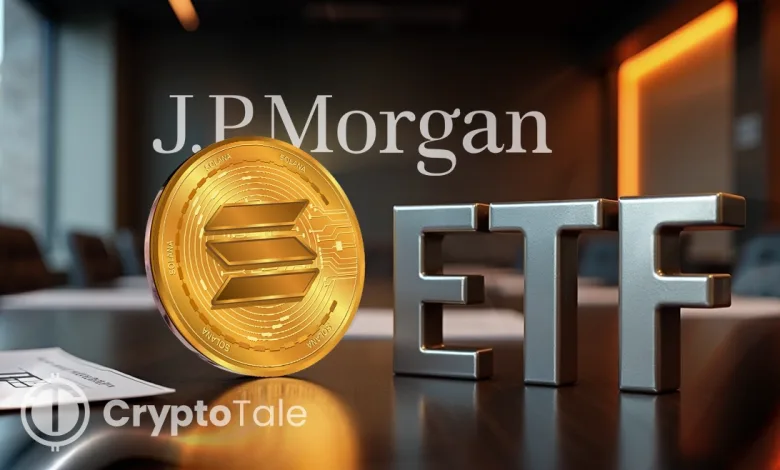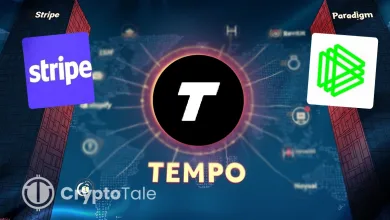JPMorgan Predicts Modest Demand for Solana ETFs This Year

- SEC approval for Solana ETFs appears imminent, backed by CME futures and prior launches.
- JPMorgan expects Solana ETFs to see about $1.5B in first-year inflows, far below Ethereum’s.
- Weak network activity and investor fatigue may limit demand for Solana ETFs, JPMorgan warns.
The U.S. Securities and Exchange Commission (SEC) is expected to approve multiple spot cryptocurrency exchange-traded funds (ETFs) this month, including those tied to Solana (SOL). According to a report released on Wednesday by JPMorgan, analysts anticipate that the SEC’s decision will follow the agency’s recent pattern of approvals for Bitcoin and Ethereum ETFs, which occurred earlier this year.
The report, led by managing director Nikolaos Panigirtzoglou, noted that Solana’s established futures contract on the Chicago Mercantile Exchange (CME) and the launch of the REX Osprey Solana ETF in July strengthen the likelihood of approval.
The final deadline for the decision on Solana ETF filings is October 10, and markets broadly expect a positive outcome. Bloomberg’s senior ETF analyst Eric Balchunas also commented that approval odds have now reached near certainty, citing the SEC’s adoption of generic listing standards that simplify the filing process.
Although this development marks another step towards the integration of digital assets into traditional finance, JPMorgan warned that investor interest in Solana might not be equal to that of Bitcoin and Ethereum.
JPMorgan Forecasts Limited Demand for Solana ETFs
JPMorgan expects Solana ETFs to attract only small inflows of approximately $1.5 billion in the first year, despite high expectations of approval. It accounts for approximately one-seventh of the flows observed by Ethereum ETFs, which generated roughly $9.6 billion in their first year of operation.
The analysts based this prediction on initial inflows into the REX Osprey Solana ETF, which had accumulated approximately $350 million since its inception. They have also made comparisons between the relative size of the decentralized finance (DeFi) ecosystem of Solana and Ethereum, as the smaller overall value locked (TVL) of Solana bolsters the less optimistic prediction.
Nevertheless, JPMorgan cautioned that even this estimate would be optimistic. The bank noted some of its possible headwinds, such as decreasing on-chain activity, increasing prevalence of memecoin trading on the Solana network, and investor exhaustion of buying many crypto ETFs in recent months. Additionally, corporate treasuries and diversified crypto index products, including those based on the S&P Dow Jones Digital Markets 50, can withdraw investments from Solana-specific funds.
Market Trends Reflect Waning Investor Enthusiasm
Market indicators also show subdued enthusiasm. The Grayscale Solana Trust (GSOL)’s premium to net asset value (NAV) has fallen by approximately 750% over the past year to nearly zero, following a pattern seen with Grayscale Bitcoin and Ethereum trusts before they transitioned to spot ETFs.
Moreover, a low demand for CME Solana futures contracts reinforces JPMorgan’s expectations of low inflows. The analysts say that investor sentiment has remained cautious, especially as Solana faces stiff competition from Ethereum, which continues to hold its position as the leading smart contract and DeFi platform.
Related: Luxembourg Invests 1% of Its Wealth Fund in Bitcoin ETFs
Crypto ETF Expansion and Market Outlook
The SEC’s decision to approve almost sixteen spot crypto ETFs in the future is a historic move in the digital asset sector. Following the successful launch of Bitcoin ETFs in January 2024 and Ethereum ETFs in May 2024, Solana ETFs are now following the trend set by increased institutional access to other types of digital assets.
Solana, the sixth-largest cryptocurrency by market capitalization, gained momentum because of its rapid transaction speeds and low costs. However, despite its technical strengths, analysts believe that investor perception remains conservative regarding Ethereum.





